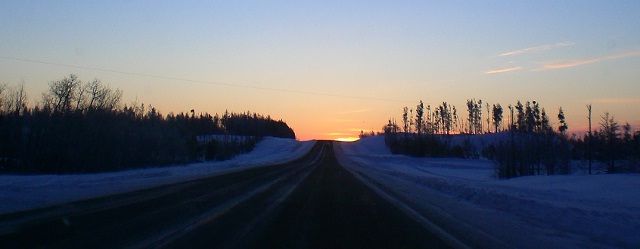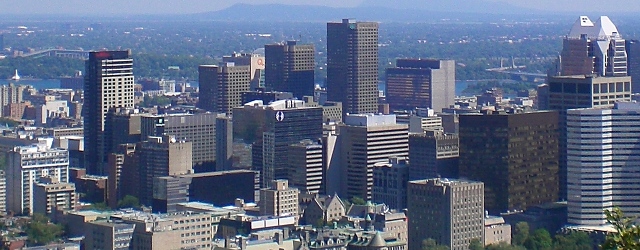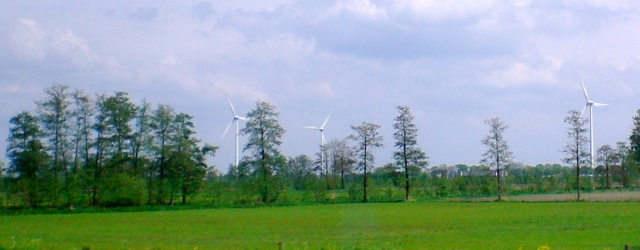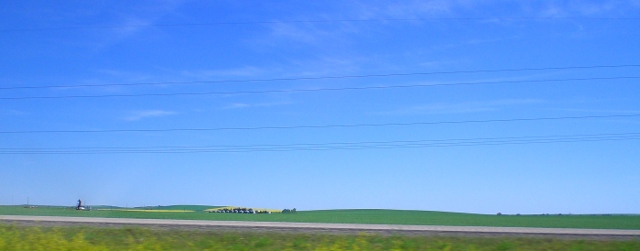Ben Harack was interviewed on the Ecolibrium radio show on CKUT in Montreal. Topics were Moving Planet, Saskatchewan’s sustainability, and peer-based cross-disciplinary efforts towards sustainability.
Tag: Nuclear Power

A renewed look at 2010, a sustainable vision for 2011
Here we review major renewable energy topics from 2010 and then turn towards analyzing energy issues for 2011 and beyond.
Power system performance metrics
Everything has its price. Every form of power production has costs in dollars, time, land, materials, pollutants, greenhouse gas emissions, and human deaths. We look at the most important factors for analyzing the feasibility of a proposed power project. Considering only some of these factors will lead to an incomplete picture of power system costs.
Fusion fuel cycles: What they are and how they work
There are a number of different fuels that can be used for creating fusion power. Here we look at the useful ones and look at their advantages and disadvantages. Different fuel cycles require very different implementations.
Is nuclear fission power renewable?
The long term supply for nuclear fission fuels on the planet earth is estimated to last several thousand years at current consumption levels, assuming that we adopt reprocessing as well as develop and implement breeder reactors.
Is most radiation from nuclear power?
Nuclear power is a tiny fraction of our total radiation dose. Nuclear power is legally obligated to keep its radioactive emissions incredibly low. Even people who live close to nuclear power plants will receive from them only a fraction of the dose that they receive naturally from their environment. Human-made sources account for about 20% of the dose to humans, with nuclear power composing less than 1% of the total dose. Coal is responsible for a larger portion of radioactive dose than nuclear is. This is a point missed by most people involved in the world discussion about energy sources.
Reliable power rather than baseload
What people really want is reliable power. We don’t want to end up freezing in the dark. Electricity is important enough to our society that our energy security is of great importance to us. This is a fundamental issue that all technically advanced nations have to face.
It would be a mistake to equate baseload with reliable. Baseload power sources still have to turn off sometimes. In some cases, the downtimes for the big thermal plants such as nuclear and coal can be several percent of their lifetimes. If our power grid were based off of only baseload sources of this type we might see rolling blackouts now and then unless we built extra power plants to cover the downtime.
Electricity Grid: Key Terms and Definitions
In the most general sense, we are talking about moving power from one place to another. The electric grid accomplishes this by having power lines between generation stations and demand locations such as homes and businesses. Some general rules apply to this sort of technology. The more power you have to move, the more expensive it will be to build the infrastructure to do it. The further you have to move the power, the more energy losses you are going to have in doing so. These rules apply in general, but the specifics of a problem will dictate what sort of solution is applied.

Does nuclear power lead to weapons proliferation?
Arguments can certainly be made to support either side of this argument. This article gives examples of valid arguments on both sides of the issue. In general it is clear that understanding of nuclear energy fundamentals is a prerequisite for creating nuclear weapons. In this area however, the proverbial cat is out of the bag. Pandora’s box has been opened. The knowledge exists and is relatively widespread. The real question is what to choose to do with the knowledge that the world now has.
Would nuclear be too expensive for Saskatchewan?
This piece refers to kilowatt-hours (kWh) and costs-per-kWh as well as cost per installed watt ($/kW). If you are new to these units, please consult our introduction to energy system terms. In this area of knowledge, we defer to our publicly-owned utility for the best possible answer. Sask Power’s analysis in 2009, submitted to the […]
Does nuclear waste last millions of years?
Prior to reading this article, it is recommended that you read our basic definitions for discussing nuclear science. In this article we refer to ‘used nuclear fuel’ and to ‘nuclear waste’. For our current discussion these are both the same thing. To get a deeper understanding of nuclear power in general, see our general nuclear […]
Does nuclear power cost more than other options?
While some variants of nuclear power plants are estimated to cost up to five times as much as competing technologies such as minimally-compliant coal power, these are extreme examples. Most populations will not allow minimally-compliant coal plants to be built because of their substantially dangerous pollution as well as radioactivity levels far above those of a nuclear power plant. Their radioactive and chemical emissions come in the form of massive fly ash ponds as well as airborne fly ash emissions.

Nuclear Myth and Fact Project
Nuclear Power: Our First Major Project In October 2008, the Uranium Development Partnership committee was formed by the government of Saskatchewan. We noted that the mandate of the committee was to recommend the best ways for Saskatchewan to enjoy prosperity by developing nuclear industries. We also noted that the committee seemed to be filled primarily […]
Nuclear Plants Need Backup Generators
A power utility has to have the capability of calling into service enough power to make up for the loss of its largest generator on short notice. For a nuclear generator, this would be between 300 and 2000 MW. In our home province of Saskatchewan, the largest single generator SaskPower has to keep backup capacity for currently is a 300MW coal unit. However, if the entire Boundary Dam facility went down, the Saskatchewan system could be missing as much as 813 MW of power.

What does ‘renewable’ mean after all?
If you think of renewable sources of energy you probably think of things like wind turbines, solar panels, biomass plants, and hydroelectric plants. However, these are just examples. What does it mean to be renewable?

Saskatchewan’s Energy Future
We presented at the Legislature regarding Saskatchewan’s Energy Future. We proposed a feed-in tariff, increased wind power, adoption of a smart grid, and LEED incentives.

Nuclear Power: The Whole Story
Electrical power production using a nuclear power source is accomplished through the heat produced by bringing greater than a specific amount of radioactive material together. Water is heated to create steam, which in turn spins turbines to generate electricity. Greater quantities or concentrations of nuclear material produce more heat. The higher the temperature of the heat source, the more efficient the production of electricity from it becomes. If the core becomes too hot, it is possible for core material to melt. If the reactor core is kept relatively cool, the energy production is not thermodynamically or economically efficient. Combinations of different fuels, fuel cladding, and coolants have been tested to optimize reactor cores for efficient power production while remaining very safe. Many different combinations are in use today, each with it’s advantages and disadvantages.

Critique of Saskatchewan’s UDP Report
The Uranium Development Partnership (UDP) is a ministerial advisory committee established in October 2008 for the purpose of analyzing the economic feasibility of all forms of uranium development in Saskatchewan. On Friday April 3rd, the final report was released to the public containing recommendations to the government of Saskatchewan.
Radiation: Key Terms and Definitions
The activity of a piece of radioactive material (called a ‘source’) is a measure of how many radioactive decays taking place per second. If you compare two uranium sources for instance, the one with the higher activity would be emitting more energy. There are three kinds of radioactive decays: alpha, beta and gamma.

Energy Storage
Energy storage is the saving some form of energy for later use. Energy is critical to every accomplishment of humans. This energy can take many forms. Some examples include potential, kinetic, chemical, and nuclear energy.
Energy storage is critical to the stable function of a power grid. Inevitably, power stations have to be serviced or have failures. Even failures that are a fraction of a second can be disastrous for certain applications, such as monitoring systems for heavy machinery, computers, and other sensitive electronics. Stability of power is a key factor in the design of an effective power grid. Stability requires that there be backup systems in place in case of a baseline power failure. Energy storage is required for most backup systems to be effective.